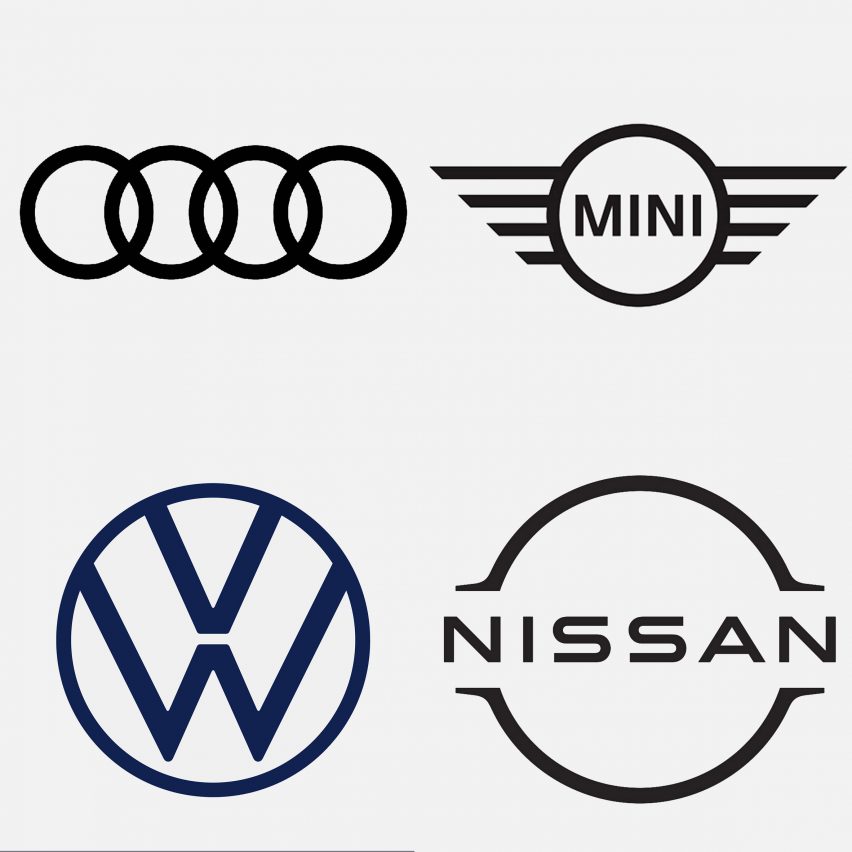
After rebranding with three-dimensional, chrome-effect logos in the 80s and 90s, carmakers from Nissan to BMW are reverting back to flat designs to keep pace with the digitally led world. We've rounded up seven examples.
Simplified, flat logos replicate better on screens and in miniature as app icons, prompting designers to ditch the three-dimensional (3D) logos that were popular among automotive companies in the 1980s and 90s.
These logos had shiny chrome-effects that mimicked how the emblem would look like in metal as a car mascot. This style, called skeuomorphism, has fallen out of favour since Apple began to prioritise flat design in its software updates.
Car brands are now reverting back to mid-century style flat design for their logos in an attempt to better align themselves with the style set by the tech company. Changing back to two-dimensional (2D) logos is also a way to offer better readability on digital platforms.
"With the advent of digital brand touchpoints and especially small mobile screens, all those fiddly bevels and gradients meant the logos became little grey smudges, indistinguishable from one another," explained Dan Beckett, lead designer of Toyota's latest logo.
"I don't see [flat design] as a new trend," Beckett added. "I see it as the logical solution to a universal problem created by a different trend."
Read on for our selection of seven car brands that have recently rebranded with flat design:
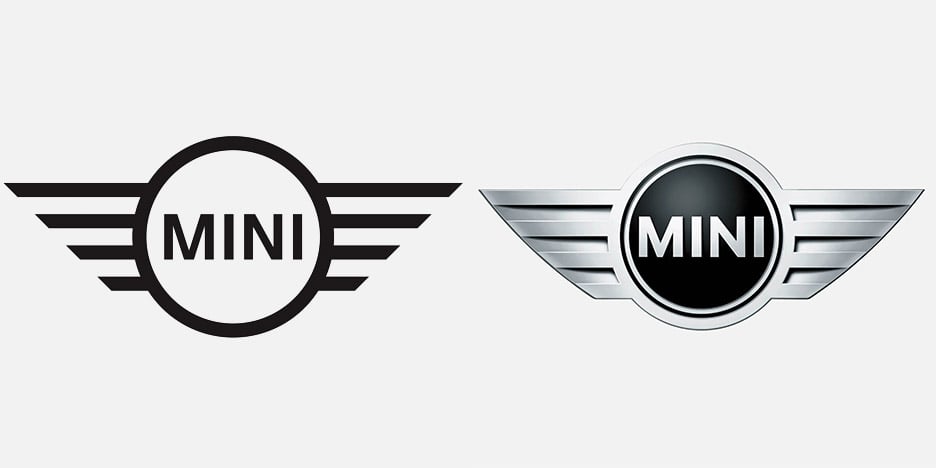
MINI was one of the first car brands to switch its logo to a flat design, which it unveiled in June 2015. The new, minimal logo is a 2D, monochrome version of the double-winged symbol from the 1980s.
Like most of the other automakers flattening their brand identities, the flat version of the emblem will be used on screens and paper, while the MINI vehicles themselves will keep the 3D, chrome-style iteration of the logo.
The logo redesign was accompanied by a new serif font called MINI Serif. The two updates, together, were launched to make it look like MINI was "entering a new era," according to head of design Anders Warming.

Formerly 3D and also featuring a chrome-effect, Volkswagen's old logo was flattened and reduced to its basic elements in September 2019. This was the brand's first major change to its visual identity since it adopted the 3D design in 2000.
The new logo has a 2D design, with the letters V and W encased in a circle, all coloured in one shade of dark blue.
This move was coordinated with the launch of its first fully electric production car, the ID.3, which was the first car to bear the new logo. Like MINI, Volkswagen claimed that its updated "digital-first" branding would mark the "start of a new era".
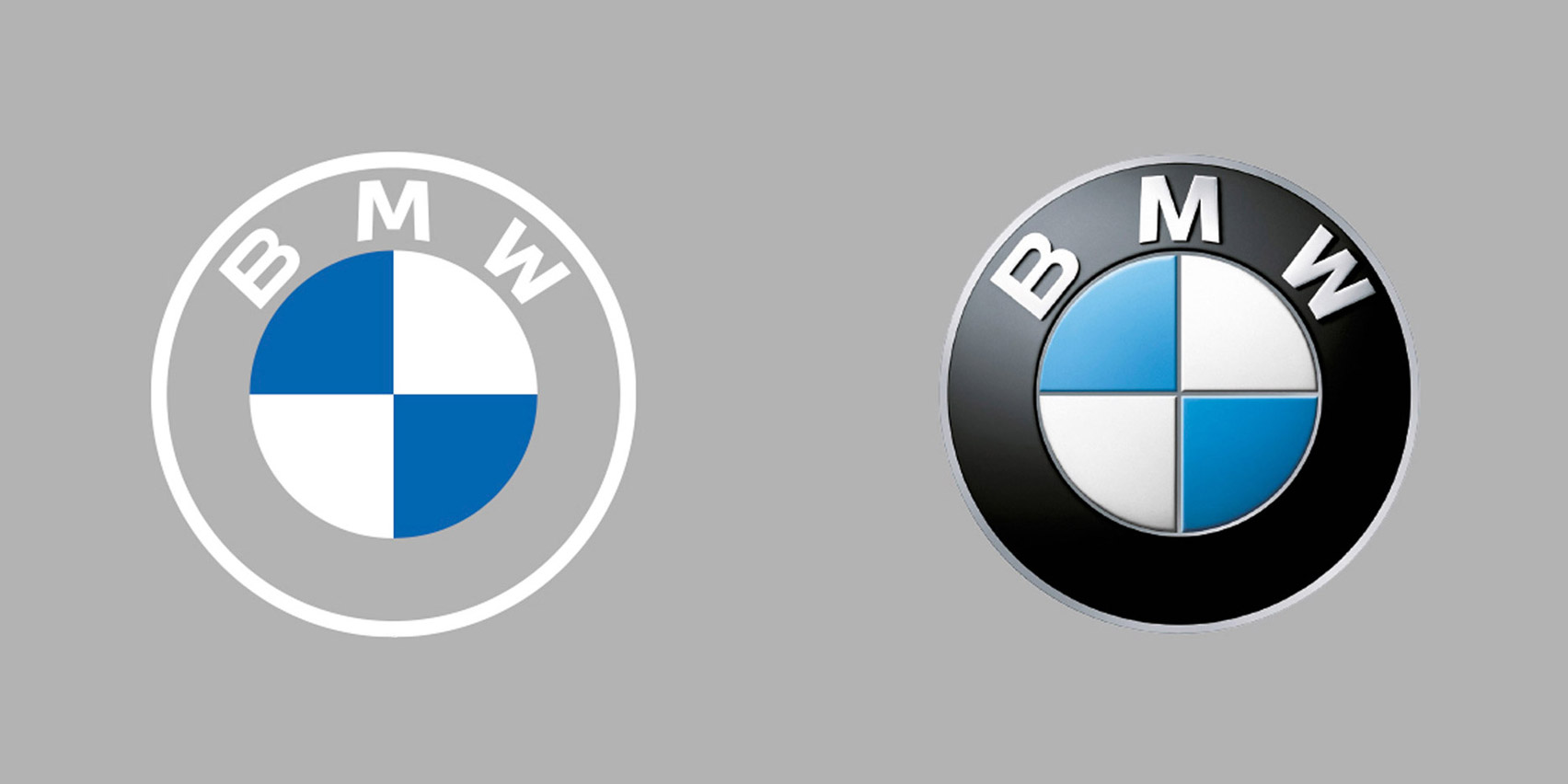
Earlier this year in March, BMW rolled out a minimalist redesign of its logo, introducing a new, transparent backdrop. This was the first time the German car manufacturer had overhauled its emblem since 1997 when it was changed from 2D to 3D.
The new design sees the distinctive black ring that surrounds its blue and white centre replaced with a transparent band, meaning that it will take on different colours and patterns depending on what background it is placed.
The rest of the logo was flattened, ridding of the shadows on both the black ring and the blue and white inner circle. It was first featured on Volkswagen's electric Concept i4 vehicle, which gave the ring a metallic bronze colour.
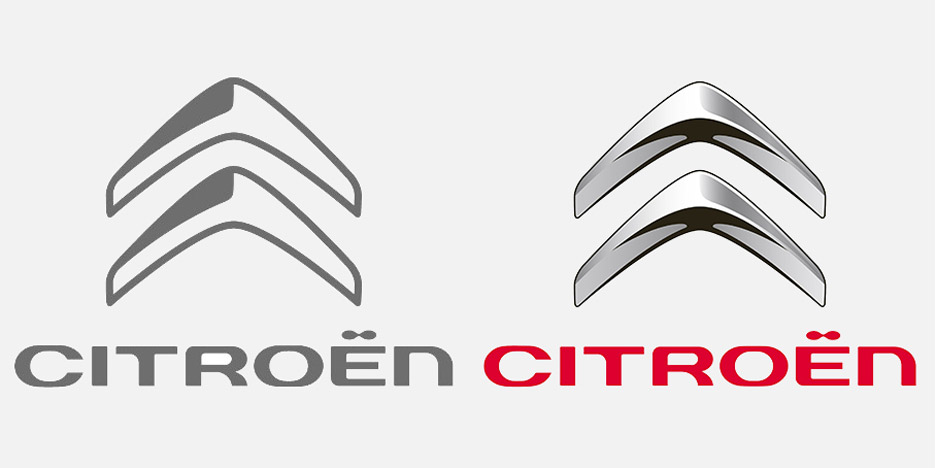
Citroën
Citroën changed its logo in 2016, losing the shine of its two chevrons and the distinctive red colour of its name, leaving a flat, monochrome design.
The French automaker was slightly later than other car brands to jump on the 3D bandwagon, not replacing its formerly flat logo created in 1977 with a raised, metallic design until 2009.
As the company explained, its new 2016 logo was designed to increase its visibility. "This choice of graphics is in line with the current 'flat design' trend for simplifying signs," said Citroën. "Using just one colour it offers new graphic opportunities and gives the brand new impetus."
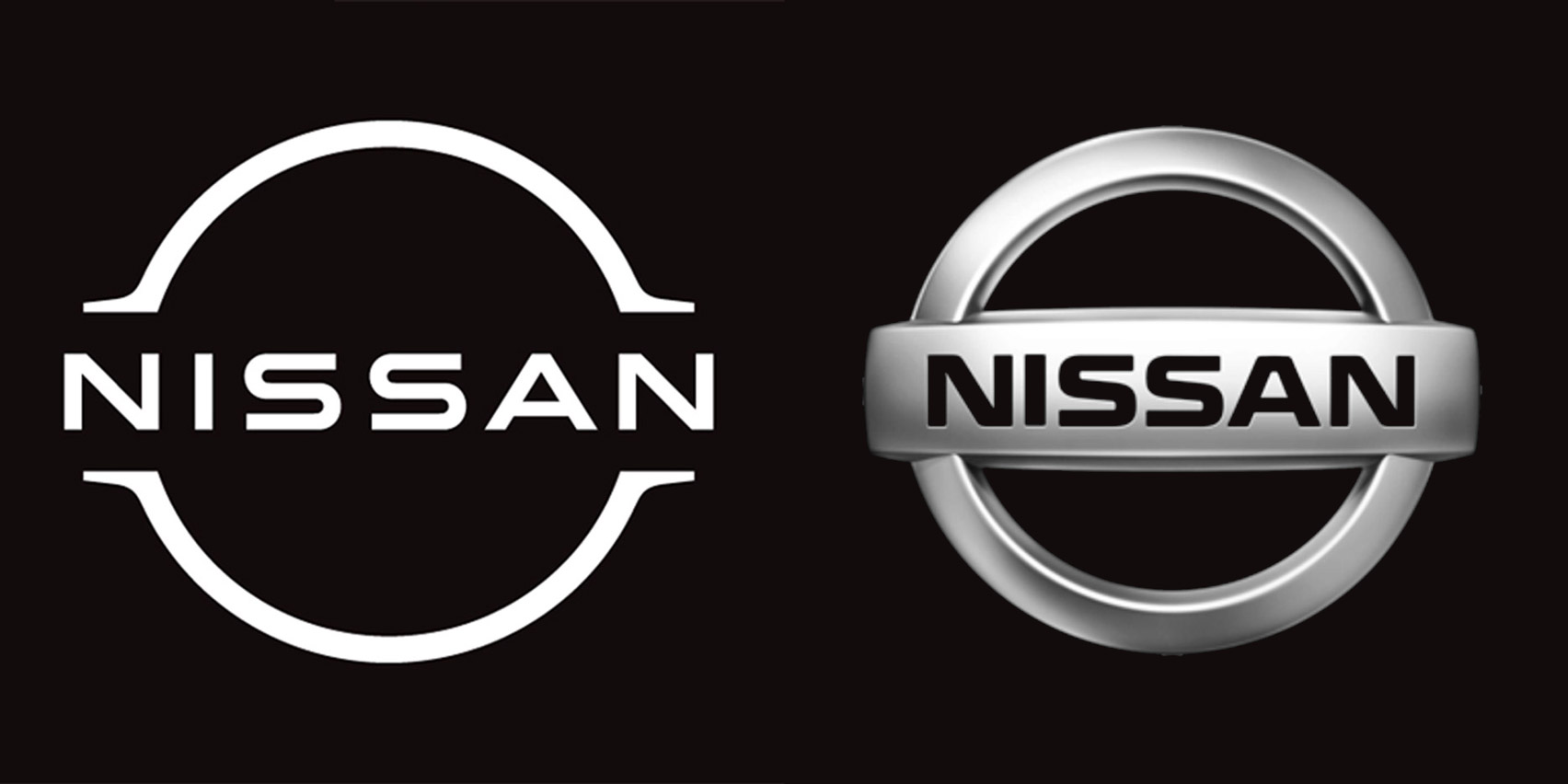
Japanese car brand Nissan recently updated its logo earlier this month, when it launched a flat and more stylised version of its previous emblem, which boasted a raised, life-like effect.
While the company name has been kept at the centre of the logo, it no longer sits inside a raised box, as the former rectangle-overlaid-on-a-circle look has been simplified into two basic lines.
The new logo is more "digital-friendly" according to the automaker and was the first time it had changed its visual identity in 20 years. The last overhaul saw the brand swap its original logo for a 3D version.
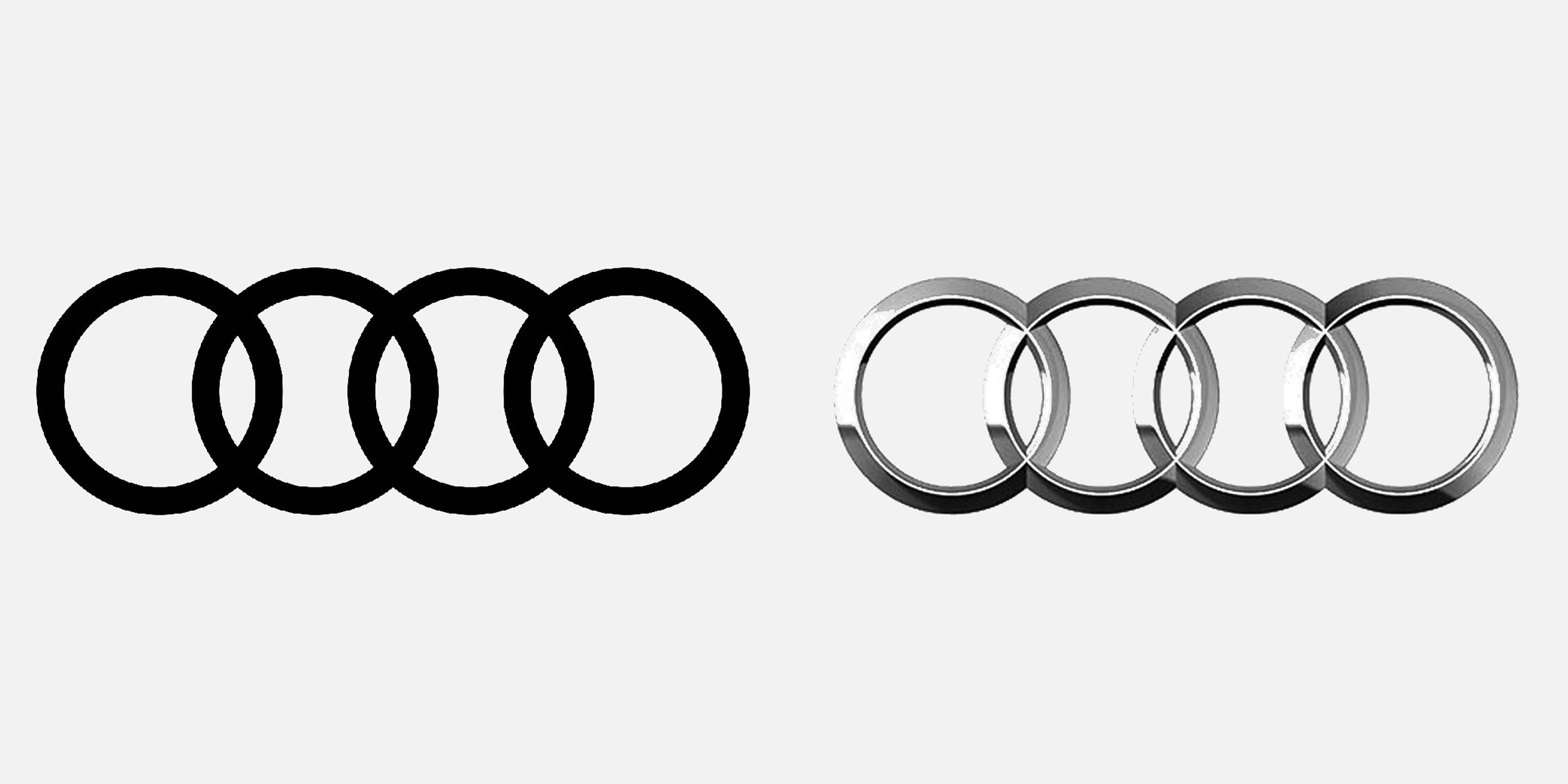
Audi
German automaker Audi made the move from 3D to 2D in 2017, flattening the recognisable four, interlocking rings that were formerly designed to look like they were made from reflective metal. Again, this decision was made to reposition the brand as "digital-first", and to improve its readability across online platforms.
Two decades prior in 1995 Audi has made the switch from a flat logo design to a three-dimensional style, – only to go back to a 2D design 22 years later.
Most recently, the car brand has launched an interactive tool that allows people to change the thickness of the rings in a bid to make its visual identity "more accessible".
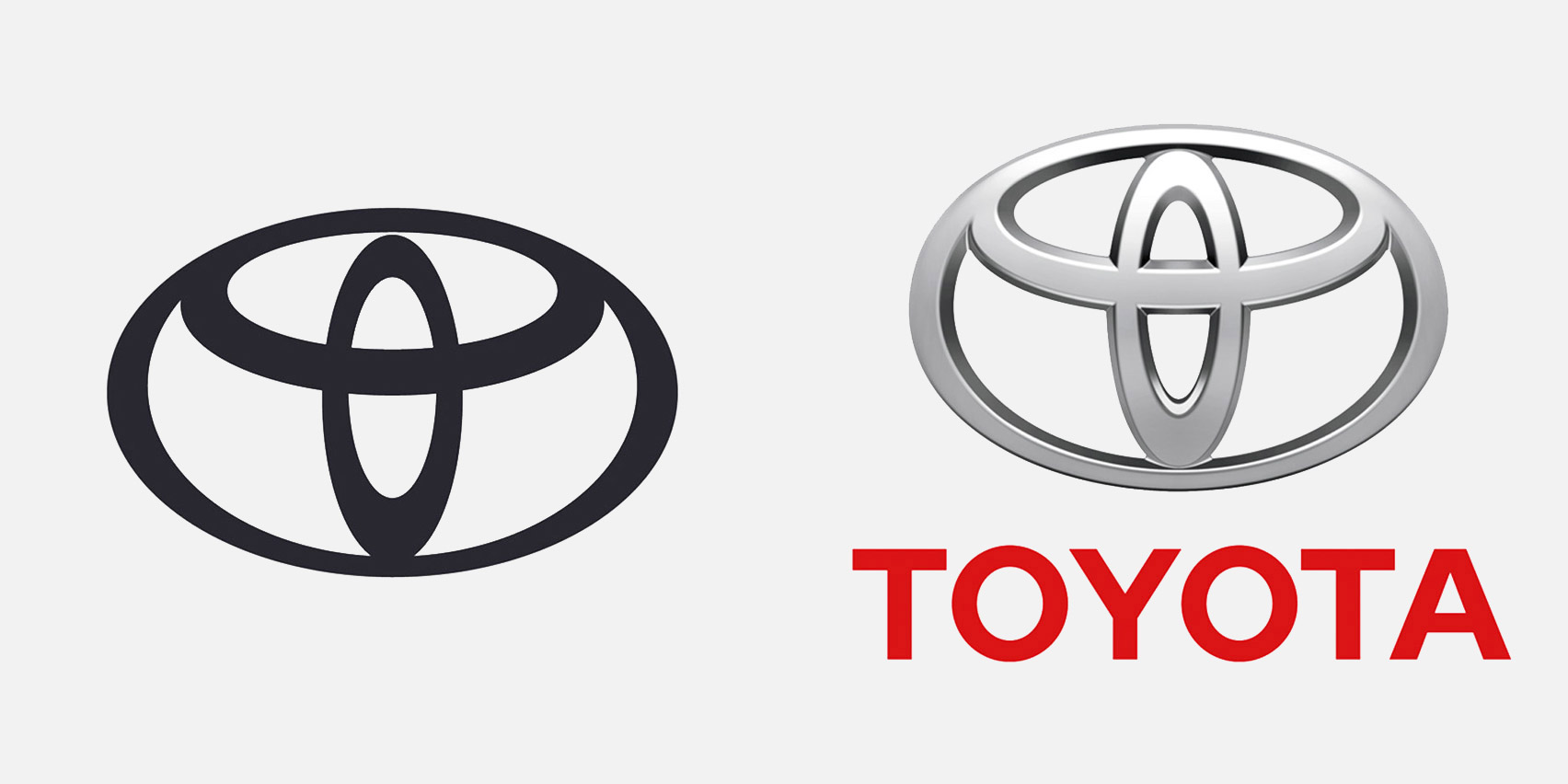
Toyota's Europe division was the most recent carmaker to have flattened its logo, the design of which it unveiled earlier this week, which comprises a simplified, 2D emblem made up of three overlapping ovals.
The Japanese auto company first changed its logo from 2D to 3D in the late 1980s, but recently reverted back to the old flat design to ensure "longevity in a digital world".
This new visual identity also involved the removal of its wordmark, as a marker of Toyota being "one of the most recognisable brands in the world".
The post Seven car brands that have returned to flat logo designs appeared first on Dezeen.
https://ift.tt/30Pdxjz
twitter.com/3novicesindia
No comments:
Post a Comment